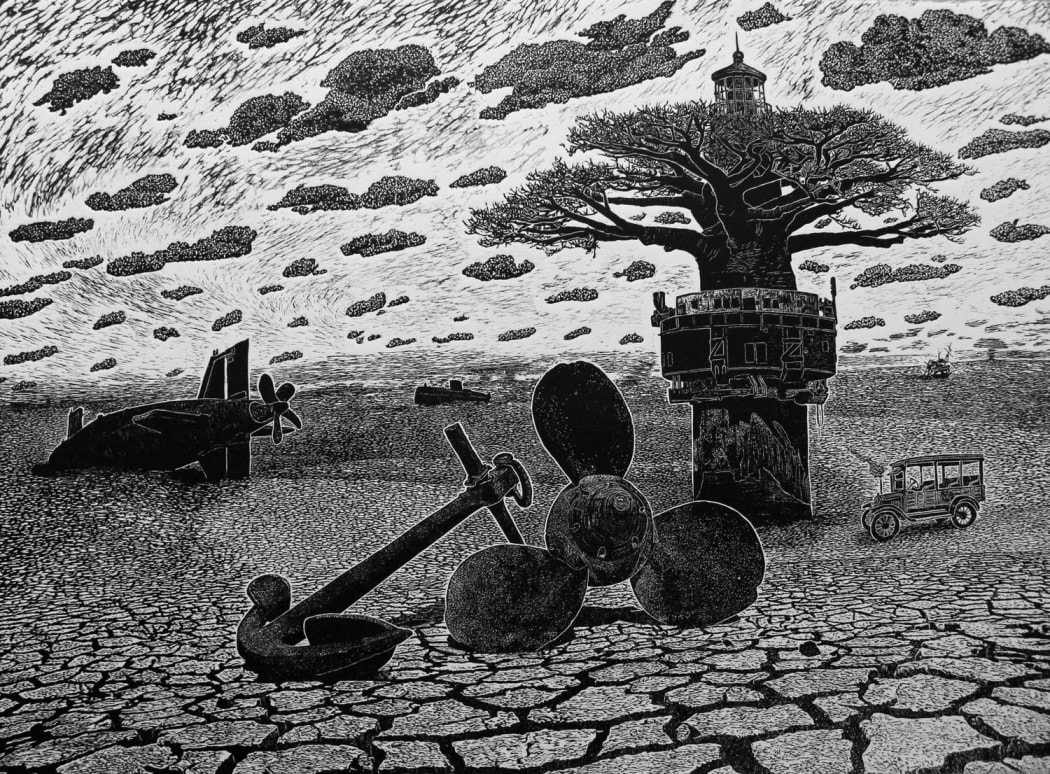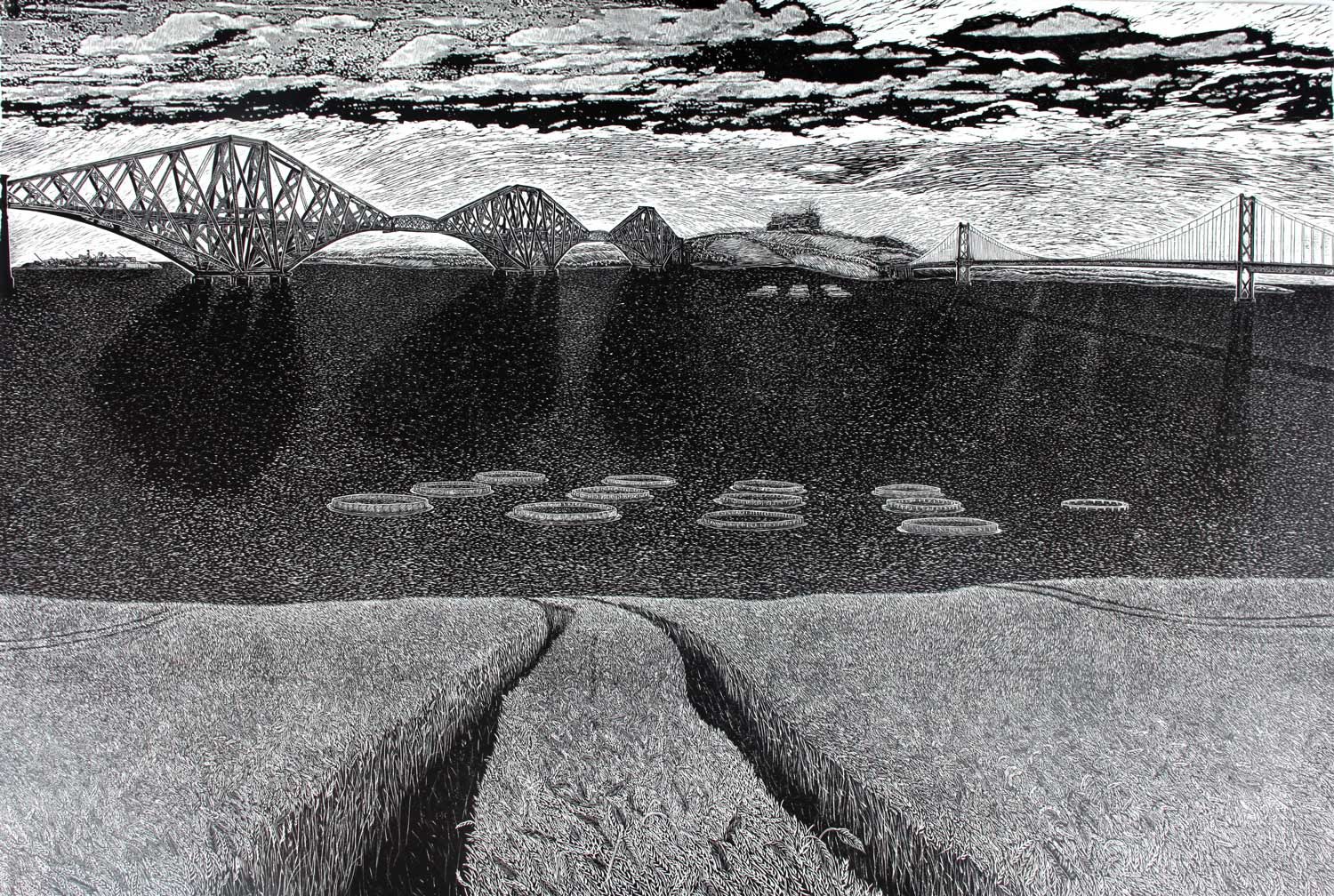
The greatest joy of running an art gallery is the search for work that pushes forward and redefines its field, and which has contemporary significance as well as timelessness. Despite the infinite number of ways to express stories of our existence, it is still rare to find the agenda-resetter, but I think Ade Adesina does this. His work is urgent, a global song for the early twenty-first century. He has not drifted into his art but does it with international breath and conviction. Ade Adesina is a printmaker, born in Nigeria and now living in Aberdeen.
His work is complex with many stages. First, the muse. For Adesina, this is often the fragility of the Earth and the layers of (ab)uses put upon it by mankind. Flooding and desertification are often central; then there are re-purposed trees, whales swimming in the air (or is it us living underwater,) windfarms, oil-rigs, people and the detritus of human existence all appear. Adesina’s concern, like the Jedi force, is all-connecting, everywhere and on the side of good.
Secondly there is the challenge. Just creating an object isn’t enough for Ade Adesina. Part of his reward comes from exploring new places and subjects. He relentlessly pushes boundaries and has collaborated with many notable artists - wizards sharing spells. Ian Burke, June Carey, Lenox Dunbar, David Mach, Tomasz Wrombel and Barry McGlashan have all worked with Adesina. He has also jumped at every opportunity to travel and absorb. Adesina is either in the studio or travelling. As I type, he is in St Martins (the Caribbean, not London.) My Grandfather lived for many years in Jamaica and I know how Caribbean artists enjoy bright colours, an aesthetic far removed from traditional British linocuts and etchings. What new printable wonder will Adesina come back with?
Thirdly, there is the zone. Some of Adesina’s latest creations are vast linocuts, 6 foot by 4 foot. These need to be worked on one square millimeter at a time. It is a grueling process. Sometimes he works throughout the night and for many months on a single piece. As he works Adesina composes the work. This is a period of heightened awakeness, when disperse elements are pulled together to produce a new artistically-divined landscape. Think of a writer squirrelled away, composing a story. It is a place of concentration and free flow of ideas where time can be lost and eventually, if you are lucky, you emerge with a masterpiece. This is the zone.
Finally, there is magic. Etchings, linocuts and other artists’ prints are carved in the negative. What is a dark trough in the lino-block will be clear paper in the final print. Dark ink-soaked points are the uncarved crests left behind; and there are the subtleties of mid-tones and shading and the process of inking up. Huge skill and patience is needed for any print, let along Adesina’s vast linocuts, and the end results is not always predictable. The revealing of a print from the press is like a rising sun. It heralds the rebirth, magic and optimism of a new day. It is the culmination of everything – the muse, knowledge, time spent in the zone – and now, once block and paper are separated, the new print is alive and the good side of the Jedi-force is a little stronger.

